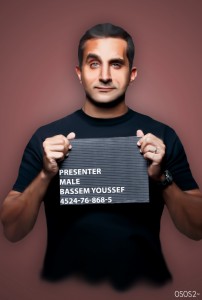Crosswords, Wu-Wei, and Flow

Five letters …Chinese system of thought
Suellen and I like to do crossword puzzles together. We enjoy sorting out the wordplay and ambiguities and finding the solution. When we can’t figure out the answer, we use the same strategy but different tactics.
Our strategy might be called indirection – we move away. I’ve discovered that I often find the answer when I give up. I look at Clue #3 and can’t figure it out. So I think, “Well, I can’t get it so I might as well move on to Clue #4.” In the very brief time that it takes me to move from Clue #3 to Clue #4, the answer often comes to me. I’ve de-focused and given up when the answer simply pops into my head.
Suellen’s indirection is physical and spatial rather than temporal. We typically work at a table and we usually lean in close to the puzzle. When Suellen can’t get the answer, she stands up and looks at the entire puzzle from a distance. She sees the puzzle as a whole and spots patterns. Capturing the global nature of the puzzle helps her sort out specific clues.
In both cases, we move away. We’re no longer trying to solve a specific clue. We’re not doing rather than doing. I thought of this when I read “Trying Not To Try” by Edward Slingerland in a recent issue of Nautilus. Slingerland is a professor of Asian studies and cognition (what a great combo) at the University of British Columbia.
Slingerland describes the Daoist concept of wu-wei or effortless action. “Wu-wei literally translates as ‘no trying’ or ‘no doing’ but it’s not all about dull inaction. In fact, it refers to the dynamic, spontaneous, and unselfconscious state of mind of a person who is optimally active and effective.”
Slingerland argues that achieving wu-wei requires us to balance and integrate Systems 1 and 2. As you may recall, System 1 is our low-energy thinking system that is fast, automatic, effortless, and always on. System 1 makes the great majority of our decisions automatically — we don’t need to think about them. System 2 is the conscious energy hog that helps us think logically and provides executive task control. When we say, “I gave myself permission to have another glass of wine”, we’re essentially saying, “My System 2 gave my System 1 permission…”
Wu-wei integrates the two systems. Slingerland writes, “We have been taught to believe that the best way to achieve our goals is to reason about them carefully and strive consciously to reach them. But [wu-wei] … shows us that many desirable states are best pursued indirectly. … When your conscious mind lets go, your body can take over.”
Wu-wei also reminds me of the concept of flow described by Mihaly Csikszentmihalyi. For instance, Csikszentmihalyi writes that flow involves a stage called incubation, “…during which ideas churn around below the threshold of consciousness.” Similarly, there is an insight phase – an Aha moment. At this stage, too much focus can be self-defeating. You need to let your mind wander. You need to not try too hard.
Whether we call it wu-wei or flow or something else, it’s a remarkable concept. Trying not to try may seem contradictory but it’s worth a try. I find that taking a good long walk can help me get nearly the right balance. My body is occupied and my mind wanders. I’m not trying to do much of anything. That’s when the insights come.
Funnytown

What about Delaware?
So what’s the funniest town in America?
In April, the Daily Beast published its list of the 30 funniest cities. The analysis was based on self-assessment (Do you consider yourself funny?) and the percentage of the population that watches primetime and syndicated comedy shows on TV. According to the Daily Beast, Austin, Texas is the funniest town in the United States, followed by New Orleans, Waco, Atlanta, and Baton Rouge.
According to this analysis my hometown, Denver, doesn’t even make it into the Top 30. But then, we have a lot of things to do in Denver and don’t sit around and watch a lot of TV. Still, it beggars belief that a Baptist town like Waco would be rated funnier than Denver.
Now there’s another ranking of funny towns, based on a more “scientific” algorithm. It’s published by the Humor Research Lab (HuRL) at the University of Colorado. (So that’s where our marijuana tax dollars go). According to this ranking, Chicago is the funniest town in America, followed by Boston, Atlanta, Washington, D.C. and Portland, Oregon.
Denver ranks eighth on the HuRL list. Four of the ten least funny towns are clustered in Texas, including Arlington, El Paso, Fort Worth, and San Antonio. Somehow, this seems a lot more logical to me than the Daily Beast analysis. (However, the governor of Texas, Rick Perry, did generate a lot of laughter in the last presidential election).
So what makes a town funny? The HuRL researchers looked at variables like types of entertainment supported in the town, and a “need for levity” personality test. They then rolled these measures into a supposedly impartial “humor algorithm” that they could use to rank cities.
Is the algorithm really impartial? Does it really measure how funny a city is? Does it actually measure anything meaningful? I’m not so sure but I think we could put it to the test. We learned a few weeks ago (here and here) that humor promotes health by reducing stress, blood pressure, and general paranoia. (Humor, however, doesn’t seem to promote longer lives).
If humor promotes health then there should be a correlation between funny towns and healthy towns. I don’t have the data yet I think we should correlate the HuRL list to a healthy cities list to see if there’s any relationship. If there is, then maybe the HuRL list actually provides something meaningful. We might even use such data to lower the cost of healthcare in America. Instead of investing in new pharmaceuticals, we might invest in better jokes.
I should mention that the University of Colorado researchers produced a pretty good book along the way. It’s called The Humor Code: A Global Search for What Makes Things Funny. You can find jokes from the top 10 cities here.
Are Computers Funny?

Pretty funny for a computer.
My friends sometimes say that they can’t tell if I’m joking or not. I wonder if they’re more like computers than we might like to think.
As you may know, computers can actually create jokes. They have a much more difficult time identifying jokes. Sort of like some of my friends.
Constructing a joke often means following a pattern and, as we know, computers are pretty good at following patterns. As Margaret Boden points out, , “Humor is essentially a matter of combinatorial creativity.” Scott Weems seconds the notion, “When we create a joke we’re not inventing new thoughts or scripts, we’re connecting ideas in new ways.”
We’ve seen this before with innovation and creativity. Some of our most successful innovations are mashups of two or more relatively prosaic ideas. Rather than thinking outside the box, we pull old ideas from multiple boxes and combine them in new ways. The wheel is not a new idea. Nor is luggage. Only recently did we think to combine the two to create wheeled luggage.
Can a computer combine ideas in a humorous way? Well, sure. This morning I created about a dozen new jokes using the Joking Computer on the University of Aberdeen website. Here are the two best ones:
What do you call an American state that has a lip? Mouth Carolina.
What’s the difference between aluminum foil at noon and an amusing garden? One is a sunny foil; the other is funny soil.
They both follow a pattern involving rhymes, word substitutions, puns, and antonyms. I doubt that either one of them made you laugh out loud but they’re kind of cute.
Then I went to the Humorous Agent for Humorous Acronyms – HAHAcronym – website. Unfortunately, it doesn’t seem to be active any more. I found two things humorous about this project. First, it could generate acronym definitions like:
MIT – Mythical Institute of Theology
FBI – Fantastic Bureau of Intimidation
Second, the project was funded by the European Union. Can you imagine the U.S. Congress funding something similar? It would almost certainly win a Golden Fleece award.
You may think that these software programs are not clever at all. They simply repeat a pattern. But we humans often follow similar patterns (sometimes called scripts) to create humor. Here’s one that I learned long ago and still use on occasion:
You can make most any sentence mildly funny by appending to it one of two endings:
….., said the Bishop to the chorus girl. Or
….., said the chorus girl to the Bishop.
So, are we no better than computers? In some forms of joke production, we’re similar. But there are many forms of joke production. But the big difference is joke recognition and appreciation. Weems provides an example of a joke that we would get but a computer wouldn’t:
He is so modest that he pulls down the shades before changing his mind.
Why wouldn’t a computer get it? Because a computer doesn’t have world knowledge. It doesn’t understand that you might pull the shades before changing your clothes but that changing your mind is quit a bit different than changing your clothes.
Will computers ever catch us in humor appreciation and production? I suspect they will and fairly soon as well. I was surprised at how quickly computers solved the problem of driving cars. Or of grading essays almost as well as I can. It shouldn’t be long before computers can actually make us LOL.
Laughtivism
 Can laughter change the world? I’d like to think so. That seems to be the basic motivation behind an increasingly popular form of activism known as laughtivism. According to Foreign Policy magazine, “Today’s non-violent activists are inciting a global shift in protest tactics away from anger, resentment, and rage towards a new, more incisive form of activism rooted in fun.”
Can laughter change the world? I’d like to think so. That seems to be the basic motivation behind an increasingly popular form of activism known as laughtivism. According to Foreign Policy magazine, “Today’s non-violent activists are inciting a global shift in protest tactics away from anger, resentment, and rage towards a new, more incisive form of activism rooted in fun.”
Plato, of course, banished humor and laughter from The Republic. He thought humor would distract the populace from the more serious issues of the day. Today’s laughtivists turn that logic on its head. The world is malign and malevolent; laughter is the only cure.
The phenomenon (I hesitate to call it a movement) is widespread. Beppe Grillo is one of the most popular and incisive politicians in Italy. Srdja Popovic used humor in opposition to a man who never seemed to smile, Slobodan Milosevic. Bassem Youssef in Egypt is widely known as the Arab Jon Stewart. The Yes Men have now made two films aimed at raising awareness of “problematic social issues.” And, of course, Jon Stewart is widely known as the American Bassem Youssef.
Laughtivism aims at political enlightenment and activism by undermining the legitimacy of ruling elites, especially those that scowl. I mean, really, how hard is it to make fun of Dick Cheney?
It’s also spiritually akin to culture jamming, which aims more broadly at undermining the established culture and mainstream media. As Wikipedia notes, culture jamming “purports to ‘expose the methods of domination’ of mass society to foster progressive change.” As such, laughtivism harks back to Abby Hoffman, the Yippies (with their nude radio show), Dr. Strangelove, and, perhaps, even to Marshall McLuhan.
Laughtivism aims to speak truth to power. That’s all well and good, but as Kei Hiruta points out in Practical Ethics, laughter “can also be used to conceal truth and reinforce cynicism.” We’ve all heard racist or sexist or homophobic jokes that aim to do exactly that.
While I enjoy laughtivism, I wonder how effective it is in changing the social order. For instance Yes! Magazine identified “Five Protests That Shook The World (With Laughter)”. Here’s how it describes the protest it ranks as number one:
In 1967, Abbie Hoffman and members of the Yippies, a radical activist group, threw 300 one-dollar bills from the New York Stock Exchange balcony onto the trading floor. According to Hoffman, as brokers grabbed for petty cash, trading ground to a halt. The famous stunt mocked the unregulated greed that still pervades Wall Street.
I happen to remember that protest. I laughed very hard and admired Abby Hoffman very much. But did it really change anything? I’m sure that it inspired some people and enraged others, but I didn’t see the pillars of society waver even a tiny bit.
Aristotle and other Greek rhetoricians taught that humor can help us learn and remember but that it doesn’t motivate us to take action. Humor can inspire and educate and even go viral but it doesn’t get us off the couch. Anger is the emotion that motivates action, which is precisely why our political rhetoric is so filled with anger.
I admire laughtivism because it can open a crack in the social facade. But I don’t think it has the force to drive the wedge home. As Hiruta says, “Mockery, jokes and satire are powerful tools to destabilise the existing order, but they are ill-suited to the different tasks of ending chaos, filling a power vacuum and installing a new order.”
Men, Women, Laughter, and Love

Made you laugh.
I like to make people laugh. I’m especially funny (I think) when women are around. So, what’s with that?
Frankly, I don’t know why I like to make women laugh. Surprisingly, the neuroscience community seems mildly confused as well. I’ve been reading up on humor as a window into how our brains work. One aspect is that men and women view and use humor differently. But not, perhaps, in the ways you expect.
Here’s what I’ve discovered so far. (Unless noted otherwise, these little gems come from Scott Weems’ book, Ha! The Science of When We Laugh and Why).
Quantity – women laugh more than men. Weems estimates that women laugh roughly 125 percent more than men.
Aging – women tend to laugh less as they get older. Men not so much. Does it ever even out? We need another study to find out.
Time of day – both men and women laugh more in the afternoon and evening than they do in the morning. This could be related to Immoral Afternoons.
Humor appreciation (1) – men enjoy put-down humor more than women. But this assertion is disputed. Women don’t like put-down jokes about women. When you take these out the mix, men and women are roughly the same.
Humor appreciation (2) – men like dirty jokes more than women. Again, this is disputed. Many dirty jokes make fun of women. When you factor these out, the differences evaporate.
Shared values – people tend to bond (romantically and otherwise) with other people who have similar values. How do you know if someone shares your values? Humor may be the fastest way. Men and women both use humor as a way to gauge values and degree of fit.
Humor and mateability – men and women both value humor in a mate in America, at least. American women rated intelligence as the most desirable trait in a mate; humor finished a close second. (The two are highly related). For American men, the top three traits were intelligence, good looks, and humor. But, as Weems points out, it’s different in Siberia. There, the most desired traits revolve around dependability – including faithfulness and reliability. It’s almost like Maslow’s hierarchy – if your mate is not dependable, it doesn’t much matter if he or she is funny.
Mate selection – if you ask happily married couples why they were attracted to each other, the women often say, “He made me laugh”. The men often say, “She laughed at my jokes”. In other words, men’s humor is essentially the same as a peacock’s display. Apparently, these differences exist even in young children. Perhaps this is why so many class clowns are boys.
Laughers and listeners – in general, “… people tend to laugh more when they are speaking as opposed to listening.” The lone exception? “… when a man is talking to a woman, the woman laughs more than the man.” Perhaps she’s responding to the peacock display.
Humor production – while men and women seem similar in humor appreciation, they differ in humor production. In a study cited by Christie Nicholson, women preferred men “…who could make them laugh twice as often as they returned the favor. Men, on the other hand, offered humor about a third more than they requested it.” It’s all about mate selection. (Isn’t everything?)
Relationship maintenance – it’s not just mate selection, its also mate maintenance. According to Weems, “Nine out of ten couples say that humor is an important part of their relationship. …. laughing together is essential for marital success.”
So, what’s it all mean? Perhaps Christie Nicholson sums it up best, “A genuine laugh is one of the most honest ways to convey: I’m with you.”